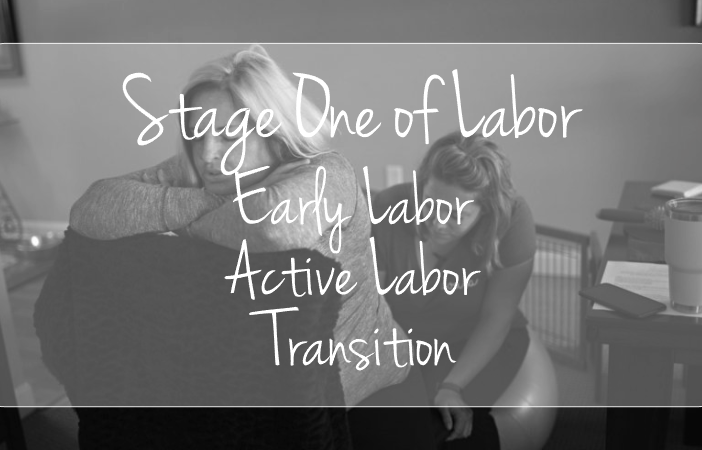It’s important to remember that not all labor and childbirth are the same. What one person may experience, you may not experience.
Every birth story is unique.
There are four stages of labor:
- The first Stage of Labor is what happens when the cervix dilates to 10cm.
- The second stage of labor is the pushing stage.
- The third stage is the delivery of the placenta.
- The fourth stage is the postpartum period.
In this post, we will learn about the first stage of labor, which includes early labor, active labor, and the transitional phase of labor. Most people refer to this generically as “labor”.
- Early Labor Phase –The time of the onset of labor until the cervix is dilated to 3 cm.
- Active Labor Phase – Continues from 3 cm. until the cervix is dilated to 7 cm.
- Transition Phase – Continues from 7 cm. until the cervix is fully dilated to 10 cm.
Early Labor
Early labor is the onset of labor until the cervix is dilated to approximately 4 to 6cm. This phase could last for a few hours to a few days.
What is Happening
- The cervix is thinning and opening, usually from 0 to 4-6 cm.
- Contractions are relatively mild, last 30 to 45 seconds, every 5 to 20 minutes.
- Possible loose stools and increased discharge.
Emotions and Behavior
- Social and interactive, able to talk through contractions.
What to Do
- Stay calm and carry on with your usual routine.
- Eat, drink, sleep, or take a bath or shower.
- Alternate between rest and activity
Partner Tips
- Time contractions occasionally.
- Remind her to eat, drink, and rest.
- Call your care provider and Doula.
- Do any final preparations.
Active Labor
Active labor is when the cervix is dilating from 5 to 7cm and could last from an hour to 8 hours, or more.
What is Happening
- The cervix continues to open, usually from 5-7 cm.
- Contractions are a bit stronger and becoming closer together, lasting 45 to 60 seconds, and come every 3-5 minutes.
Emotions and Behavior
- Focused and serious, unable to talk through contractions; less interactive and social
What to Do
- Find comfort with movements, position, heat, and breathing.
- Stay calm and take one contraction at a time.
Partner Tips:
- Protect her environment and keep her from being disturbed.
- Encourage her to keep drinking fluids.
- Move to your birthplace
Transition
Transition is typically the most difficult for mothers. Labor support is crucial during this phase. This is the shortest phase of labor as it typically only lasts up to an hour.
What is Happening
- The cervix finishes dilating, going from 7 or 8 cm to complete, and the baby moves deep into the pelvis.
- Contractions come every 2 to 3 minutes, lasting 60-90 seconds, and are a bit more intense.
Emotions and Behavior
- Might be overwhelmed, irritable, or doubt her ability to continue.
- Might be nauseous, hot, and/or immodest.
- Hot flashes and shaking may occur.
What to Do
- Use your most effective coping strategies and comfort measures.
- Remember that you are almost done and this is the shortest stage.
Partner Tips:
- Stay calm, confident, and encouraging.
- Use wet, cold cloths or a fan to cool her down.
- Suggest a change to help manage contractions.
For more detailed information regarding the phases of labor, please consider taking a childbirth class! The information you will receive during a childbirth class will be invaluable.

